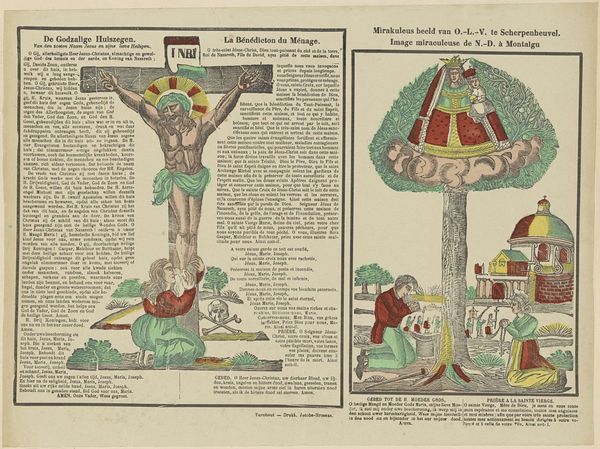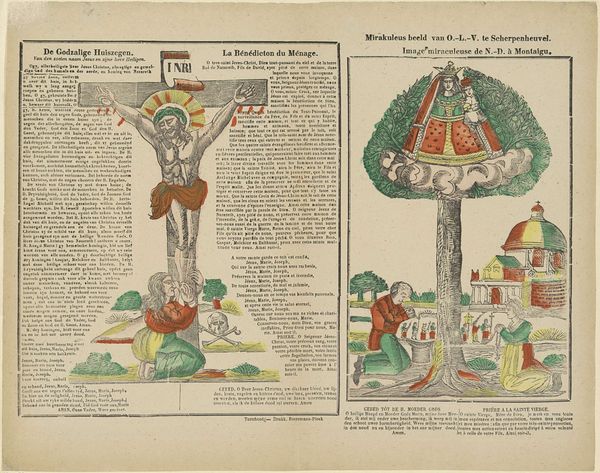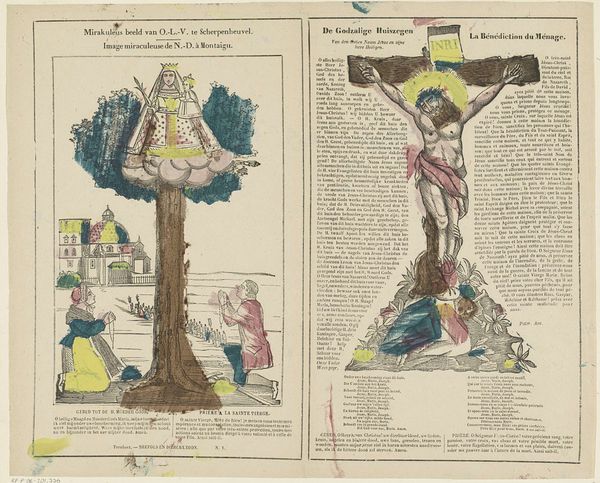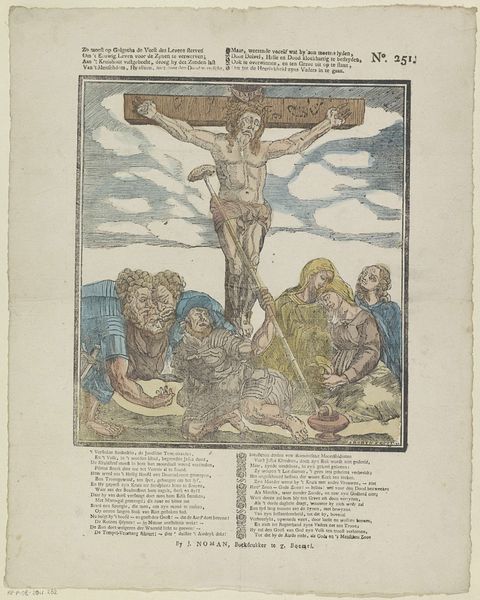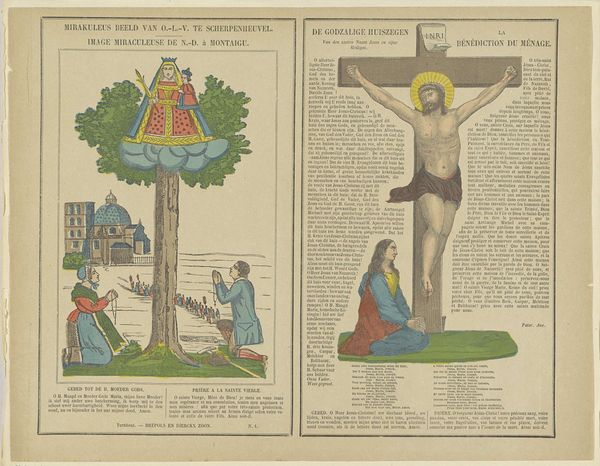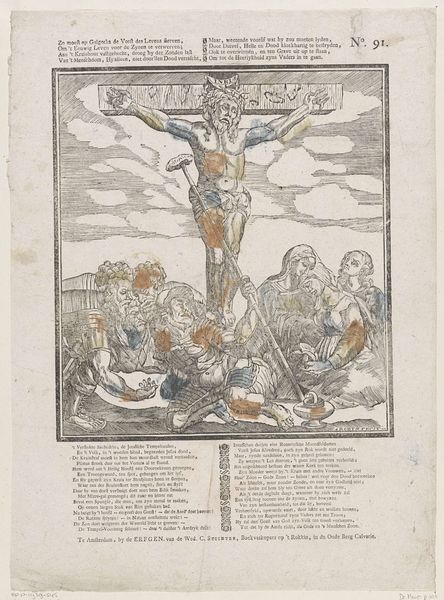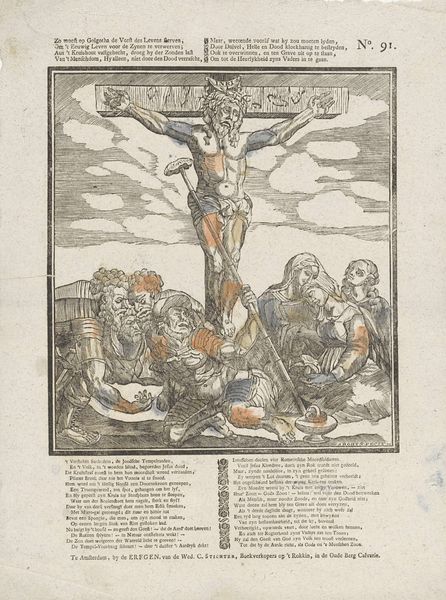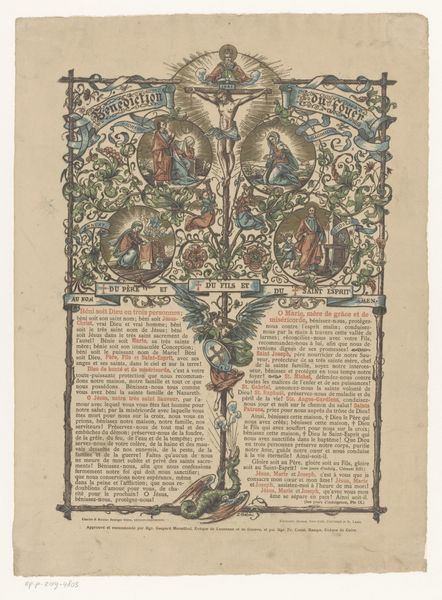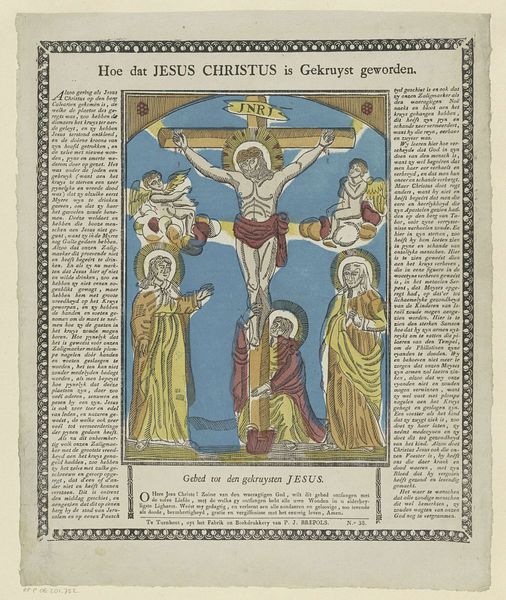
Het mirakuleus beeld van onze lieve vrouwe / Van der Linden tot Uden, / in het land van Ravensteyn / Den Godzaligen huys-zegen / van den zoeten / naem Jesus / en zyne lieve / heyligen 1800 - 1833
0:00
0:00
philippusjacobusbrepols
Rijksmuseum
Dimensions: height 331 mm, width 425 mm
Copyright: Rijks Museum: Open Domain
Editor: Right, so this is "Het mirakuleus beeld van onze lieve vrouwe," which translates to "The miraculous image of our dear women." It was made by Philippus Jacobus Brepols sometime between 1800 and 1833. It's an engraving, a print held at the Rijksmuseum. It feels like a broadside, you know, the kind that would have been sold or handed out. I’m struck by the juxtaposition of images. What do you see in this piece? Curator: What a fascinating little world this print opens up! Look at the crude energy of the lines, almost bursting with devotion. I feel the heartbeat of folk art thrumming through it, as if Brepols captured lightning in a bottle, pinning down a prayer on paper. He juxtaposes the Virgin Mary in a tree on the left with Jesus on the cross, as the central emblems for a personal kind of story... or would you describe it more as public narrative? Editor: A public narrative I think! It reminds me of a religious comic, but aimed more towards the pious... So the layout is quite busy, full of text. What purpose do you think all that text served? Curator: It does rather demand your attention, doesn't it? More than an explanation, perhaps it acts like a frame, an attempt to anchor these miracle narratives firmly in place with the reassuring authority of scripture, dogma and also in the everyday details that ground those ideas. Look how some devotees pray below the tree where a sculpture is displayed, seeking for miracle in the divine sculpture. Editor: So it’s like a combined devotional image and prayer sheet? That makes a lot of sense. Curator: Exactly! This was clearly made for popular consumption, and perhaps even, I imagine, pinned up on walls as a potent amulet, or some family's prayer totem. To protect or inspire? What did you find most captivating in our journey here? Editor: It’s amazing to think about the artwork in that personal context, displayed almost like a charm for the household. I hadn't considered how prints like these could be so deeply personal. Thanks!
Comments
No comments
Be the first to comment and join the conversation on the ultimate creative platform.

